The Four Conversations: Blair Enns on Leading, Pricing, and Selling Expertise written by John Jantsch read more at Duct Tape Marketing
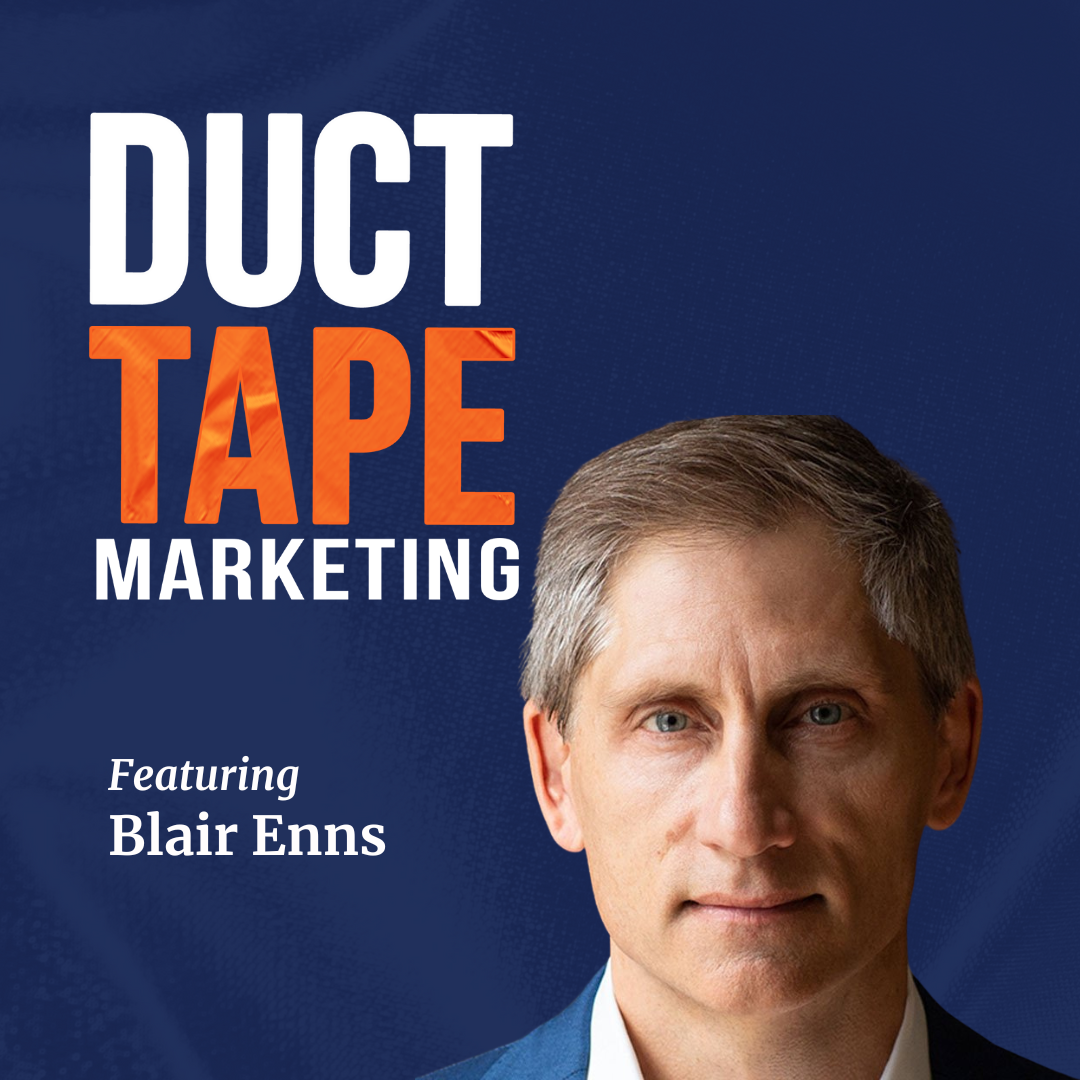 Overview
Overview
In this episode of the Duct Tape Marketing Podcast, John Jantsch interviews Blair Enns, founder of Win Without Pitching and a leading authority on selling creative and consulting expertise. Blair shares insights from his new book, The Four Conversations, which distills decades of agency wisdom into a clear roadmap for moving from pitching and price-haggling to confidently leading client relationships. Listeners will discover how to shift from vendor to trusted advisor, raise closing rates, price based on value, and master the four pivotal conversations that define every successful client engagement.
About the Guest
Blair Enns is the founder of Win Without Pitching and the author of several acclaimed books on agency sales, pricing, and positioning. Over the past two decades, Blair has helped thousands of agencies and consultancies around the world move away from free pitching and price wars toward leading client engagements and charging for their expertise. His latest book, The Four Conversations, offers a practical framework for mastering the most crucial moments in every client relationship.
Actionable Insights
- Most agencies close far fewer deals than they think—often just 25%. Doubling your close rate and raising prices by 20% can dramatically improve profitability.
- The “four conversations” framework: Probative (demonstrate expertise), Qualifying (vet fit for both parties), Value (define value to be created and price accordingly), Closing (help the client select and commit to a path forward).
- Selling expertise is not about convincing or manipulating—it’s about guiding, questioning, and facilitating the client’s best decision.
- True leadership in sales means moving from statements about yourself to questions about the client, and from eagerness for the work to discernment and selectivity.
- Pricing should begin with a value conversation—anchoring fees to outcomes, not just deliverables or time spent.
- Productizing your service delivery is compatible with pricing each client based on value, not a fixed menu.
- To move from vendor to trusted advisor, adopt the “expert’s mantra”: I am the expert, I am the prize, I’m on a mission to help, and I can only do that if you let me lead. All will not follow—and that’s okay.
Great Moments (with Timestamps)
- 01:16 – The True Cost of Letting Clients Lead
Blair breaks down the impact of poor sales practices on close rates and pricing power. - 04:45 – The Four Conversations Model
An overview of the probative, qualifying, value, and closing conversations that shape every client relationship. - 06:23 – Selling as Guiding, Not Convincing
Why selling expertise is about facilitating clients’ choices, not talking them into a decision. - 07:47 – From Proving Brilliance to Asking Questions
The shift from statements to questions is at the heart of expert selling. - 13:37 – Value-Based Pricing in Action
Blair walks through starting the pricing conversation with outcomes, not just deliverables. - 20:47 – The Expert’s Mantra
A mindset framework for making the leap from vendor to trusted advisor.
Pulled Quotes
“Selling is not talking people into things. It’s about guiding, questioning, and facilitating the client’s best decision.”
— Blair Enns
“I am the expert, I am the prize. I’m on a mission to help. I can only do that if you let me lead. All will not follow—and that’s okay.”
— Blair Enns
Resources
- Website: winwithoutpitching.com
John Jantsch (00:00.802)
Hello and welcome to another episode of the Duck Tape Marketing Podcast. This is John Jantsch. My guest today is Blair Enns. He’s a leading voice in the creative and consulting agency world, best known as the founder of Win Without Pitching. Over two decades, he’s helped thousands of agencies move from pitching and price haggling to confidently leading client engagements and charging for their expertise. We’re going to talk about his latest book, The Four Conversations, a new model for selling expertise.
Book distills decades of hard won wisdom into a practical roadmap for navigating the most crucial moments in every client relationship. So Blair, welcome to the show.
Blair Enns (00:40.337)
Thank you, John.
John Jantsch (00:42.85)
So let’s get some leverage. How much in your estimation do you think, what do you think the real cost day to day when agencies let clients run the show instead of leading the conversation?
Blair Enns (00:55.611)
What’s the real cost of letting clients run the conversation?
John Jantsch (00:58.734)
Yeah, I mean, instead of us, you know, a lot about the four conversations is really providing leadership in the conversation. So I see a lot of agencies that show up and say, what do need? Sure, we do that. And I think that’s what really leads to this price haggling, doesn’t it?
Blair Enns (01:16.091)
Yeah. So if I start to, I’ve never contemplated the total cost here, but we could do some math on the fly. The typical agency has a closing ratio of about 25%. I can actually be more specific than that. It’s oddly specific at 26%, which seems to be a universal number across all B2B sales. Now that’s when we measure it. It’s 26%. Self-declared, it’s closer to 33%. So an agency will tell you we close one in three proposals.
when we crack open the CRM and look at it, they close one in four. I think the threshold of respectability in a closing ratio is 40%. You should strive to be over 50%. So if you’re closing less than 50%, A, you’re probably writing too many proposals, B, you’re probably doing something wrong in the proposals. So let’s say you’re closing half as many proposals as you should. So there’s a starting point. And then there’s pricing. Are you getting, are you commanding,
your fair share of the value that you’re helping to create in the typical agency is not. I can’t give you a percentage on that, but I would guess it’s another 20 % across the board. The typical agency could probably increase their prices by 20%. Now with existing clients, not necessarily. They can raise prices with existing clients on average. It’s difficult with larger agencies. We’re dealing with procurement.
But if you draw a line in time, this is after today, after you’ve absorbed this information, you start to sell this way, your average proposal value should climb by 20 % easily. take the size of your firm, add 20 % to the top line, double your closing ratio. That’s the cost of poor selling.
John Jantsch (03:05.014)
So how much of that, I might leave myself right into a trap here, but how much of that is marketing and how much of that is sales? So in other words, you and I have written books that comes with, in some cases, perceived trust and perceived authority, expect to pay a premium in a lot of cases. So how much of that is done on the front end and how much of that is done in the sales conversation?
Blair Enns (03:09.383)
Ha ha ha.
Blair Enns (03:28.829)
Well, most of what I just talked about is what happens in the sales conversation, which to me is after the initial interaction. So if we’re talking about marketing is to generate leads, that’s a whole other ball of wax. Now, depending on who you are in the organization, how it thinks about sales and marketing, in some organizations, some agencies, lead generation can be seen as a sales function.
And in others, it’s seen as a marketing function. Typically, it’s seen as a bit of both or a specific combination of both in the average firm. The better your marketing goes the saying, the less selling you have to do. But that’s an interpretation of that statement. It’s really about seeing that statement views selling as lead generation. But there’s all this stuff that I just referenced, which is what happens after you begin the conversation with the lead. So there’s a whole other
area of improvement to be had under the banner of marketing.
John Jantsch (04:28.942)
Yeah, and it’s probably the combination just amplifies everything, right? The combination of both of those being effective amplifies everything. So let’s just go right to the title of the book. What are the four conversations and why do they keep happening no matter how seasoned somebody is?
Blair Enns (04:45.349)
Yeah, so the four conversations, this is a model. A model is a view of the world, a way of organizing complexity. All models are wrong. Some are useful. The book opens with that quote. So I’m not saying the sale always happens in a series of four linear and discrete conversations, but it is helpful to think of it that way. So the four conversations and their objective are the probative conversation, where your goal is to prove your expertise to the client and move in their mind from a position of a vendor to the expert.
That’s the conversation that happens without your president. Your marketing would be under the domain of the probative conversation. It’s a conversation in construct only. It happens through your agents of thought leadership, referral, referrers, and your marketing. And then you have the three person to person conversation that happened after that, which you would think of as the sales conversations. There’s the qualifying conversation, which is the vetting conversation. You’re vetting the lead to see if this is something worth spending your time on.
There’s the value conversation where you’re uncovering the value to be created and the share of that value you might command in the form of fees. So you’re starting to set not price, but pricing guidance, rough approximate pricing guidance based on the value to be created rather than the cost of your solutions. And then the final conversation is the closing conversation where you help the client commit and select, select and commit to a path forward.
John Jantsch (06:11.224)
You know what I love about as I listen to you talk about all four of those conversations, they’re not about like manipulating or getting this thing that you want done. They’re really about creating value for both parties, right?
Blair Enns (06:23.109)
Yeah, I’m a big believer in the idea that selling is not talking people into things. I think, you know, we make this distinction or we I make the distinction in the book, you know, between expert and vendor. And you think of your expert self, the way you operate as an expert, you’re in your relationships with your clients. So after sale, the way you show up, you’re kind of you’re an advisor. You facilitate choice. You point out the pros and cons of decisions.
John Jantsch (06:28.59)
Right.
Blair Enns (06:52.061)
You give the client some decisions to make, you point out the pros and cons of those decisions, and I think that’s how you should navigate the sale as well.
John Jantsch (06:59.63)
I talked to a lot of agencies that I’m sure you’ve heard this quite often as well. They feel like they’re giving away their expertise, pitching for free, giving consultations to show that they know what they’re talking about and really all along the way kind of giving it away. do you get people out of that place of being stuck?
Blair Enns (07:19.121)
Well, there’s no short answer to the question of how you get people out of that. You write a book on a model, you get them to read the book and implement the guidance in the book is the short one. But as you point out, it’s hard. I myself, I struggle with this a lot. I’ve for years, it’s been the hardest thing for me to go from seeing myself as the person with the answers, the subject matter expert, to the person with the questions. So if you think of how a typical marketer shows up in the sale,
John Jantsch (07:45.294)
Mm.
Blair Enns (07:47.655)
They wanna prove their brilliance. And yeah, we do that in the probative conversation, but that’s the conversation that happens without you present. Once you’re in a conversation with an individual, instead of trying to prove your brilliance, you should arm yourself with a set of questions. And so in our model of the four conversations, each conversation has a framework or set of frameworks, has a specific objective, which I shared with you, and then a framework or set of frameworks.
for navigating to that objective. Now those frameworks are almost all questions. So the short answer to how is you go from statements about yourself to questions about the client.
John Jantsch (08:29.058)
Well, and those statements often are not just about yourself. They might actually be offering solutions, right? Yeah. Yeah. number two, qualifying. I know that this is not your take on this, but I know a lot of people hear that qualifying and they’re thinking, it comes off more like I’m going to see if you qualify to work with me. you know, and it can actually be a little off putting if not done.
Blair Enns (08:35.377)
Free advice, yeah.
John Jantsch (08:56.91)
How do you approach making sure that the client doesn’t feel like they’re being evaluated?
Blair Enns (09:04.283)
Yeah, I think some people do overplay that idea. So you can take this idea of qualifying and you can put on a spectrum. At one end, there’s the client qualifying you. At the other end, there’s you qualifying the client. And most of these qualifying conversations, the typical listener wouldn’t think of them as a qualifying conversation. They would think of them as a credentials conversation or a credentials meeting. So what does that mean if we put it back into this context of qualifying? It means you’re trying to qualify for the client.
The assumption is this is a good fit for you. Now you’re trying to prove to them that they’re a good fit. And you have to do that and there’s a way to do that, but the conversation is all about you first making sure that they are a good fit for you. That implies that you’ve actually thought about who is a good fit for you. What is your ideal client profile? Who do you want to do business with? Who will you not do business with? How much money do you need somebody to spend? And so,
John Jantsch (09:52.046)
Yeah, yeah.
Blair Enns (10:00.305)
You can have a very business-like conversation using a framework to organize questions around that without coming across like an ass. But in the wrong hands, somebody can overplay that idea and they can make the client feel uncomfortable.
John Jantsch (10:08.257)
Yeah.
John Jantsch (10:16.151)
You know, one of the things over the years that I’ve liked to use as a qualifier is there are certain behaviors that the client has or what they believe in terms of what value is and how a solution gets done. And in some cases, we get very good or most people get very good at understanding, this is a problem I can fix well. I know I could do this one. So where does that come into the qualifying, those types of considerations?
Blair Enns (10:43.239)
Well, you have to guard against that. so qualifying is the vetting conversation. There’s a tone in the qualifying conversation. It’s a tone of discernment. So you’re professional, you’re clinical, you’re, if you’re getting really enthusiastic about the opportunity, you’re just suppressing that for the time being. And then once you ask your questions and you determine that there is, this is a good fit for you, then you move to the next conversation, the value conversation. You can, your tone of discernment can move to a tone of deep interest. You decide,
John Jantsch (10:51.106)
Yeah.
Blair Enns (11:13.245)
You ask your questions, you get your answers, and you decide, you know what, this is a good fit. And you would say to the client, on the surface, I think this is a really good fit. I can see my team getting very excited about this. I’m not saying I’m getting excited about it. I’m still trying to moderate my enthusiasm to make sure my enthusiasm for the project or the client does not exceed their enthusiasm for me.
John Jantsch (11:23.374)
Yeah.
John Jantsch (11:36.347)
Can we stick on that for a minute? Why is that an issue?
Blair Enns (11:40.113)
Well, I have in the book what I consider to be the first principle of selling expertise. It’s a formula P equals DB over D. I printed on the back of coffee mugs. P stands for your power in the sale. Your power in the sale is a function of your desirability, DB, being greater than your own desire, D. Otherwise stated, whoever wants it the most has the least power in the buy-sell relationship.
You don’t extrapolate that to the nth degree and say, therefore, I should seek to maximize my desirability. That’s true. That part’s true. But you could also infer that to mean I should seek to minimize my expression of desire for the client. that, yeah, no. Yeah, you show up as aloof, disinterested. You don’t want that. I’m just saying pay attention to the power dynamics in the relationship and make sure, especially early on,
John Jantsch (12:24.29)
Yeah. Yeah. I don’t really, I don’t really need this sale. I take it or leave it. Right.
Blair Enns (12:38.713)
actually, throughout, there’s no especially early on, but just make sure that your own expression, allow your enthusiasm for the opportunity to rise as high as the clients and try not to exceed it. Because when you exceed it, you clearly give all your power away, your power to do your best work, to command the most profit, to command high prices. Your cost of sale will go up too as your power goes away.
John Jantsch (13:06.604)
Interesting. So let’s move to number three. guess it is. You use the phrase value to be created. Is that right? Value to be created. that. Yeah. But, but less about fees and more about the value to be created as part of the equation. So, so do I hear you saying, what we’re going to fix for this client is worth a million dollars. That’s the value it’s going to create for them. So do we base our fee on that? Or do we base our fee on the fact that we know how to do this and we do it
Blair Enns (13:14.129)
the value conversation.
John Jantsch (13:36.28)
officially.
Blair Enns (13:37.277)
So you can base your fee, I’m getting softer on this as the years go by. My previous book, which came out in 2018, is on pricing. It’s called Pricing Creativity. And I was probably a bit more of a hard, was pushing harder for value-based pricing. Today, I don’t really care how you price. I care if you have a value conversation. A value conversation begins the pricing discussion based on the value to be created. So you come to me or your…
John Jantsch (13:55.694)
Mm-hmm.
Blair Enns (14:03.601)
prospective client and I’m walking you through the simple four-step framework. What do you want John? You tell me what your vision of your desired future state is, what success looks like in the future. And I say this is a great vision. So now I’m leaning in, I’m enthusiastic. Okay, what are the metrics that will measure to prove that you’ve achieved what you want? And we talk about some KPIs, you give them to me or I pull them out of you. And I say to you, okay, I know what you want, I know what the KPIs are that we’ll measure.
John Jantsch (14:17.304)
Mm-hmm.
Blair Enns (14:32.741)
If we hit these metrics, what’s the value of that? So if we just keep it to economic value, you give me some numbers, we top line or revenue gains or cost reductions, we translate that into profit. And I say, all right, so if your vision comes true, you hit these metrics, we’re gonna create a million dollars a year and net new profit, is that right? And you say, yeah, that sounds about right if everything goes well. Now the fourth and final step is setting pricing guidance. At this point, I haven’t thought.
about what I’m actually gonna do. I haven’t talked to you about specific solutions. Even if you may have come to me with a specific solution in mind, I put it aside and I’ve put you into your desired future state. And I’ve asked you to describe success. And obviously there’s a framework around this. And I say to you, if I could help you create this million dollars a year and that new recurring profit, would you pay me X? And in that moment, I’m gonna pull a number out of my nether regions. And I want the number to be so high that you won’t pay it, that you walk it down.
And there’s some psychology, it’s called the anchoring effect and why I do this. But at some point, so if I say, would you pay me a half a million dollars? And you respond with, well, that depends, what would you do for a half a million dollars? I might say, I don’t know, I haven’t thought about solutions yet. But if I could help you create this million dollars in net new recurring profit, would you pay half a million in one time fees? And that’s.
Whether you say yes or no, we’re in a conversation on pricing and that conversation has started high. The price is tied to the value to be created is not tied to my solutions. From there, the price can go down. At the end of the day, when I come back with a proposal in the closing conversation, I can price however I want. The important thing is we have started the pricing discussion based on the value to be created, not based on the cost of my solutions.
John Jantsch (16:26.158)
Yeah, and I think that’s certainly the path towards getting a prospect or a client to think, I’m investing this money as opposed to I’m spending this money, isn’t
Blair Enns (16:36.551)
Correct.
John Jantsch (16:38.668)
So let’s talk about the money conversation. I would say that, I mean, you talked to millions of salespeople probably over the years. Isn’t that the place that they have the most issue with?
Blair Enns (16:51.325)
I think the value conversation is a pivotal conversation because we are starting to, the client, we uncover a budget if there is one in the qualifying conversation, then we transcend that budget while still acknowledging as part of the framework that the client has a budget and agreeing that we’ll come back with a range of solutions and a range of price points. We basically agree on a trade.
I’ll show you what I can do for your budget. You allow me to think creatively and expansively about what’s the most we can do to help you create this value. And it’s going to be a big price. So that’s, I love this framework for talking about money. It doesn’t make it easy, but when you understand that it’s okay for the first number to be so high that the client chokes on it or pushes back and you do this a few times, you realize everybody will survive.
This is not an existential threat. This is just part of the conversation. By the time the conversation ends, you’re in agreement that the client will consider options in a certain range. Even if the client says, listen, I don’t have the authority to spend, let’s say I anchored at 500 and we ended up at 250 and then you said, well, my budget’s 50. So I’ve got a range of 50 to 250. Even if you don’t have the authority to spend 250 in that moment.
I’ll extract from you an understanding that, okay, I’m gonna put some options in front of you that are gonna be beyond your budget. And if you’re really excited about them, it’s your prerogative. But then I would invite you to invite the other people to the table who would be required to fund this. you are always in, you the buyer, you’re always in control. You’ve stated to me that you have a budget. I’ve shown what I’m going to do for that budget. In exchange, you’re letting me push you to think bigger, to think about investing more.
And that’s a pretty fair trade. You practice this a few times, it becomes fairly intuitive to you.
John Jantsch (18:47.628)
You know, it’s been come, see very commonplace. seems like the last few years for agencies to kind of offer package services. So this much deliverable for this price. it sounds to me, when I hear you say that conversation, you’re really getting completely out of that, mold and really the idea of, of, I’m going to actually bring you something really innovative that you hadn’t even thought about when you developed your budget. Automatically you’re providing leadership instead of just.
execution, right?
Blair Enns (19:18.845)
That’s true, but it’s not antithetical to productizing your services either. So in my last two books, I’ve talked about productization and in pricing creativity, I was pretty strongly anti-productizing for agencies. When I wrote the four conversations, which I finished last year,
John Jantsch (19:38.828)
Mm-hmm.
Blair Enns (19:46.969)
I was pretty neutral on it. And I have a pretty good framework in the book for deciding, you standardize or customize your delivery model, package your services or customize and your pricing? What I mean by that is if you have packages, do you price the packages or do you price the client? And as time goes on, I’m actually increasingly in favor of product standardizing your delivery. So you have packages, but reserving the right to price the client, which is the first rule.
of in my book, Pricing Creativity, price the client, not the product, not the service.
John Jantsch (20:23.448)
So I know from many conversations I’ve had this, know, anytime I say the same thing of you want to move from vendor to trusted advisor, you know, a lot of lights go on, right? It’s like, yes, that’s exactly what I want to do. So for the listeners who are stuck in that mindset right now, is there, is there a shift or a daily habit that you would recommend that might make, help people make that leap or at least make it stick?
Blair Enns (20:47.285)
it’s a great question. there is in the book, there’s I guess it’s a principle, but it’s really a framework for getting into the experts mindset. It’s called the experts mantra. And it’s a four line statement that you repeat to yourself before you log into the conversation, before you show up for the whether it’s done remotely or in person before you enter the conversation. Just four statements that you repeat yourself.
They can benefit from a little customization, but I’ll give them to you here. I am the expert, I am the prize. I’m on a mission to help. I can only do that if you let me lead. All will not follow and that’s okay. And we can unpack each of those four sentences and they’re all rooted in something, but it’s like, I am the expert, I’m the prize to be won here. I’m on a mission to lead. If you don’t let me lead in the sale, you will not let me lead in the engagement. So this is a test of whether or not we can work together.
Yeah, and then the last one of all will not follow is just letting go of the outcomes and focusing on the process.
John Jantsch (21:48.781)
Yes.
John Jantsch (21:52.27)
Yeah,
Yeah, I love that. love that. Well, Blair, I appreciate you taking a few moments to stop by the Duct Tape Marketing Podcast. Is there some place for you to invite people to find out more about your work and obviously your books or connect with you?
Blair Enns (22:07.089)
Yeah, thanks John, I’ve enjoyed it. They can reach me in all of my work at winwithoutpitching.com.
John Jantsch (22:13.611)
Again, I appreciate you taking a moment to stop by. Hopefully we’ll run into you one of these days out there on the road.
Blair Enns (22:18.685)
Thank you.
Sign up to receive email updates
Enter your name and email address below and I’ll send you periodic updates about the podcast.

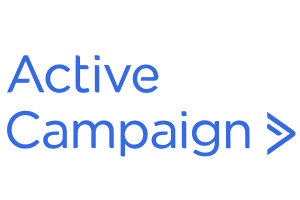


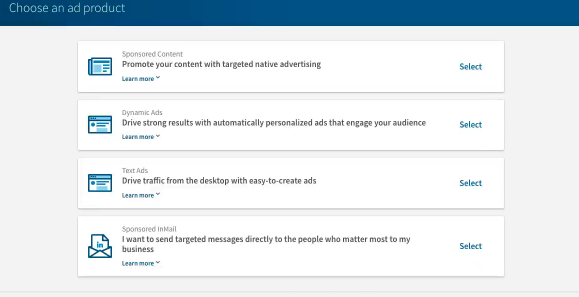
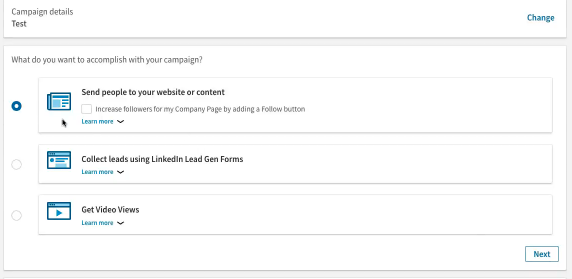
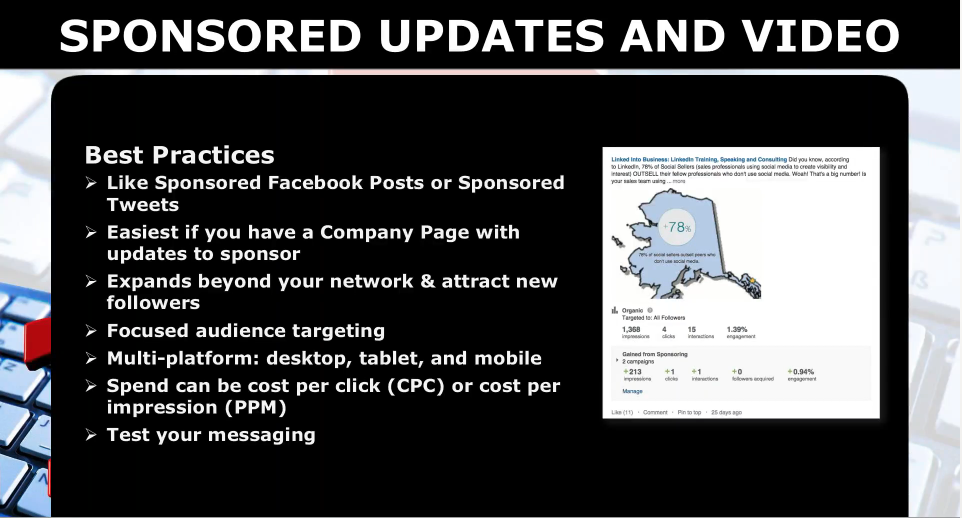
 This week on the Duct Tape Marketing Podcast, I chat with
This week on the Duct Tape Marketing Podcast, I chat with